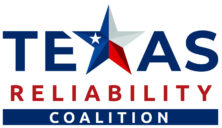FAQs
Most Frequently Ask Questions and Answers
Regulatory information comes from meetings and workshops conducted by the PUCT, ERCOT and TDSP’s. Technical information comes from the TDSP, microgrid developers, and Qualified Scheduling Entities (QSE) and best practices from other states.
Be advised, the TDSP owns the wires and the poles serving the MUDs. The circuitry for each MUD will be different but the idea is to establish an electrical boundary as close as possible to the legal geographical boundary of the MUD. This will require what has been referred to as ‘grid upgrades’ to the system like remote controlled re-closers (IGSDs) that will prevent the electrons generated from within the MUD that serves the MUD inhabitants from escaping to areas outside the MUD perimeter. This also enables the MUD to be Islanded or Isolated from the rest of the grid in the event of a grid failure. There may be other upgrades like ‘transfer trips or fuse upgrades etc., but all upgrades will be to the TDSP distribution system.
The microgrid activation will be done remotely. The TDSP will be responsible for deploying the microgrid and ensuring it is being deployed consistent with the existing rules.
If the MUD is in ‘Island Mode,’ the grid would be down and there would be no physical way for the generation to be diverted b/c there is nowhere for the power to go. Once the grid comes back on, generation will synchronize with the grid and the MUD will revert to primary grid power. There is no instance in which the critical infrastructure would not be served which is the purpose of the system.
When the grid is working properly, the generators can be used for frequency support and will provide power to the overall electric grid. In the event of a grid outage would be the only time the microgrid would be activated. The power from the generators will flow only to support the microgrid and to support all critical facilities and homes in the MUD community.
There will be no direct billings to the customers in the microgrid for any reliability services. The costs are covered in the increases that all customers in the service territory pay in their electric bills.
The person selling the USM would craft the contract and develop a template that is satisfactory and approved by the clients’ legal representatives, etc.
72 dba at 23 ft is the standard here in the ETJ of Houston. The goal is to place the units where this is a non-issue but if more sound attenuation is needed walls would have to be constructed. This will be reviewed on a case-by-case basis but make sure it is designed in a way to ensure it does not create a challenge for homeowners.
The MUD may incur some legal costs but most of the contracts should be standardized. The Engineer must approve the sighting and any ancillary issues around the site. There are no costs from the ????? as we are paid through the project itself.
